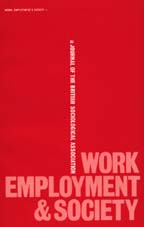Article contents
The Dynamics of Low Pay and Inequality
Published online by Cambridge University Press: 08 January 2001
Abstract
R. Asplund, P. Sloane and I. Theodossiou (eds.), Low Pay and Earnings Mobility in Europe, Cheltenham and Northampton, Mass.: Edward Elgar, 1998, £55, xix+334 pp.
Abigail McKnight, Peter Elias and Rob Wilson, Low Pay and the National Insurance System: A Statistical Picture, Manchester: EOC, 1998, no charge, 71 pp.
These two studies bear a less close relationship to each other than might at first appear from having the words ‘Low Pay’ in both titles. The common ground is all about the dynamics of the labour market: it asks primarily about the persistence of low pay, where people have come from if not previously in low pay and where they go to, not just in terms of wages but also in employment status. The difference derives from the fact that the measure of earnings in the Asplund et al. study is almost exclusively about low hourly wages. McKnight et al. deal with who has low weekly earnings, i.e. below the NI Lower Earnings Limit (LEL). Hence here the population of study is much more about part-time work and persistence/dynamics of hours than hourly wages. It is also therefore centred on women. It is an encouraging feature of the book that all but one of the chapters do cover women. All too often work on mobility and dynamics has focused on men because they are less complex. In this review I will first concentrate on what the studies suggest about Britain, and then broaden out to comparative issues.
- Type
- EXTENDED REVIEW
- Information
- Copyright
- © 2000 BSA Publications Ltd
- 3
- Cited by




